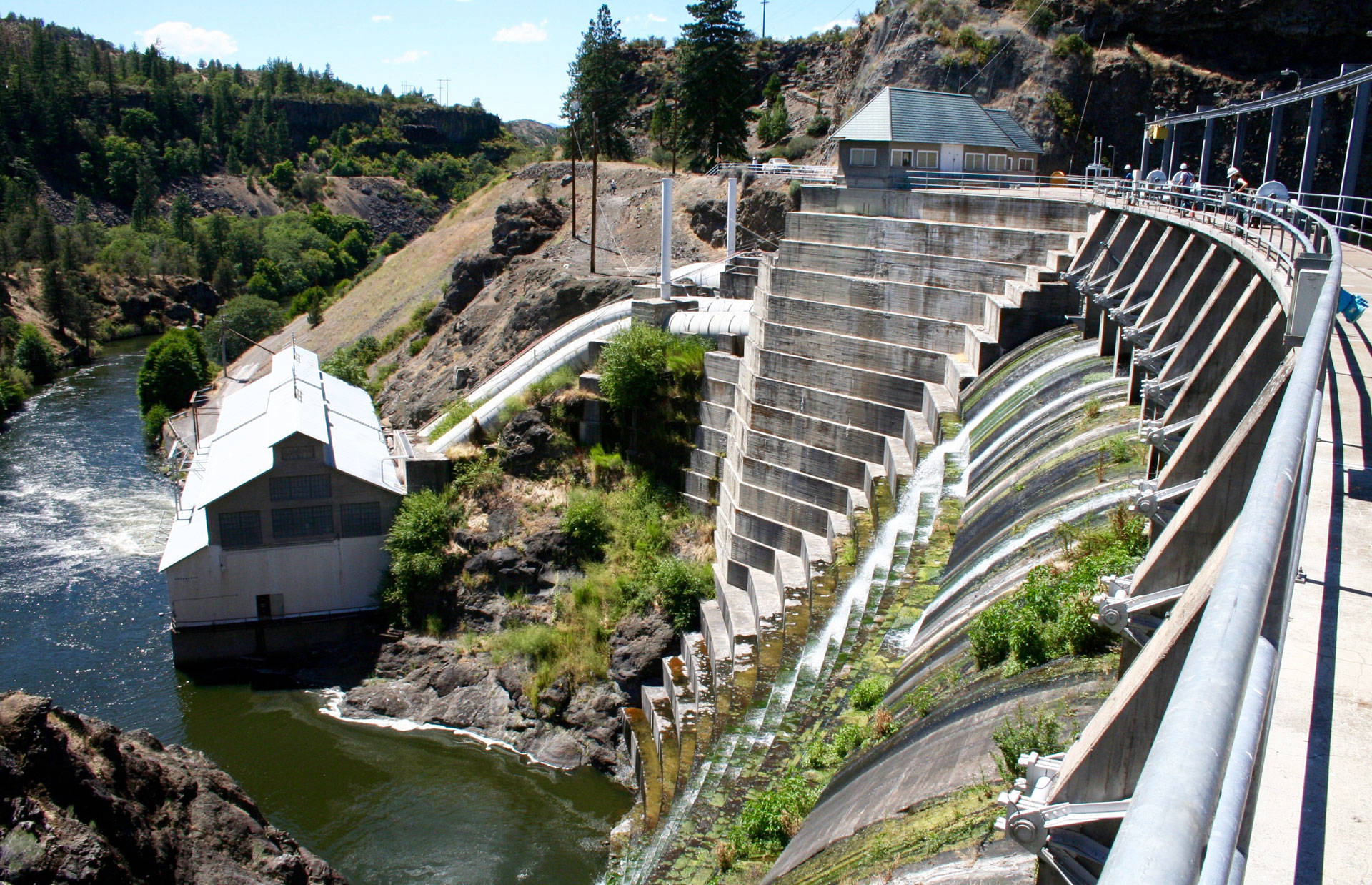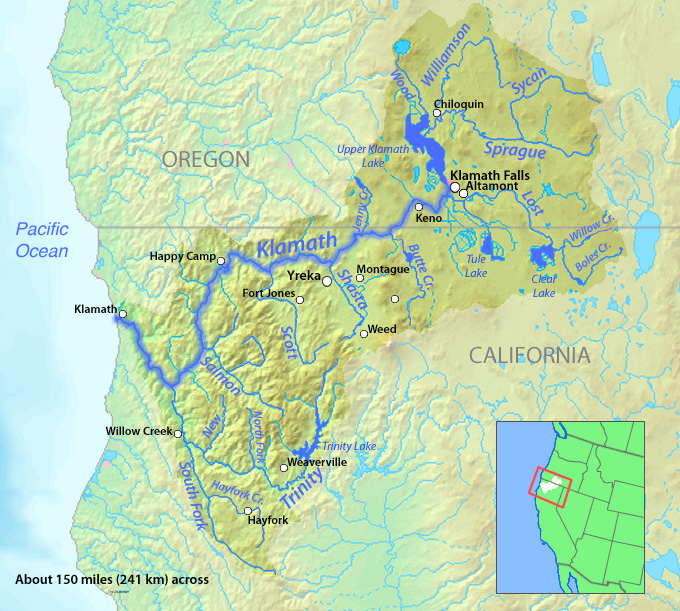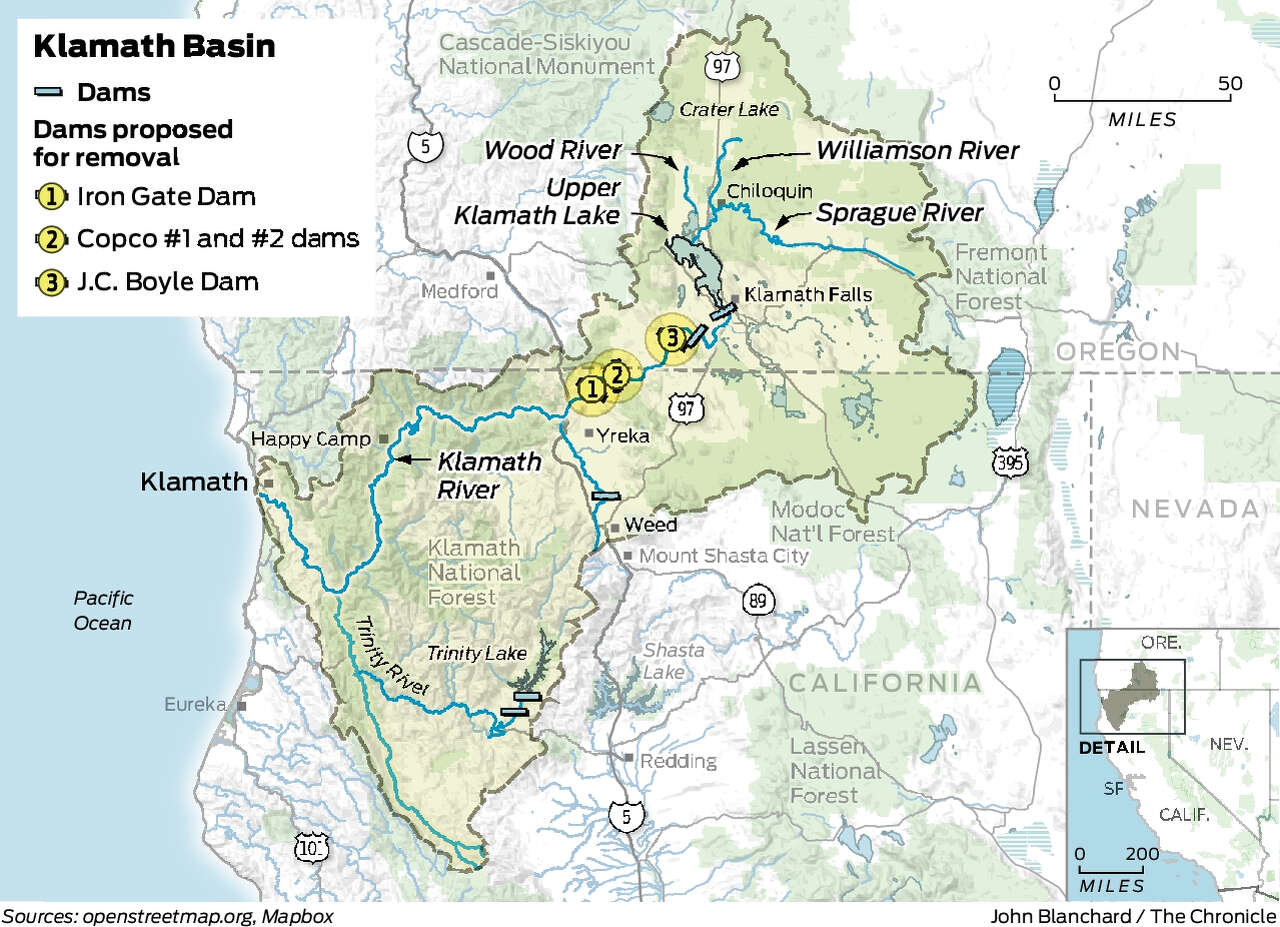January 29, 2022
Freeing Up The Klamath River By Removing Dams

2022 ended with four dams on the Klamath River losing their Federal Energy Regulatory Commission (FERC) license making them eligible to be removed! That was probably the biggest environmental announcement ever made regarding the Klamath River in southern Oregon and northern California (see Green Matters, Nov. 18, 2022). The removal process of all four dams on the lower Klamath River reached the final regulatory process in November. This clears the way for demolition to begin, which will happen this year (2023) and could finish by the end of 2024. It’s the country’s and probably the world’s largest dam removal project thus far. It would allow over 300 miles of river for salmon spawning that has been sorely missed. This fits perfectly with the Indian tribes in that area which have been working toward the Klamath River restoration for at least 20 years.
Removing what seems to be a perfectly good dam may seem like a strange idea. In the U.S. there are over 90,000 dams of various sizes. There was a time when the nation couldn’t build dams quickly enough for the power and water necessary for national growth. The truth is most dams in the U.S. are over 50 years old, have reached their useful life span, and are costly to maintain. That is true of these on the Klamath. Only 3% of the nation’s dams supply hydro-power, which is about 7% of the our total energy. While hydro-power was so important in the U.S. starting in the late 1800s peaking in the 1960s, power now comes from other sources. Roughly 2,000 dams have been demolished on various rivers around the U.S. in recent history. American Rivers (Feb. 18, 2021) reports in 2020, 69 dams were removed over 23 states.
 The Klamath River flows from the Cascade Mountains in Oregon through a series of lakes and wetlands (American Rivers web site). It winds southward into north-central California and westward to the Pacific Ocean. The tribes along the river include the Shasta, Karuk, Yurok, and the Hoopa. The upper reaches of the river are known as the “Everglades of the West”. It is estimated that more than 75% of the birds migrating along the Pacific Flyway make use of the area for feeding and resting. The largest population of bald eagles in the lower 48 states uses several national refuges as winter homes in this area. The species of most concern are fish, salmon and stealhead, that are so important to the tribes that have historically depended on fishing for their existence.
The Klamath River flows from the Cascade Mountains in Oregon through a series of lakes and wetlands (American Rivers web site). It winds southward into north-central California and westward to the Pacific Ocean. The tribes along the river include the Shasta, Karuk, Yurok, and the Hoopa. The upper reaches of the river are known as the “Everglades of the West”. It is estimated that more than 75% of the birds migrating along the Pacific Flyway make use of the area for feeding and resting. The largest population of bald eagles in the lower 48 states uses several national refuges as winter homes in this area. The species of most concern are fish, salmon and stealhead, that are so important to the tribes that have historically depended on fishing for their existence.
A statement by the Oregon director of Trout Unlimited in the Smithsonian Magazine (Dec. 1, 2022), explains this decision: “The Klamath River has been Exhibit A for how dams, drought, imbalanced water management and climate change can strangle a river.” He goes on to say, “Now the Klamath is poised to become a prime example of how an entire river system, and the people and wildlife that depend on it, can be renewed.” The tribes who call this their homeland are, needless to say, ecstatic about this project. They shared an historical culture that revolved around the salmon runs and the extended natural forests in the area. Environmentalists and other conservationists are also celebrating this as a real victory after so many years of negotiations.
These dams are owned by the utility company, PacificCorp, which states that they only contribute 2% of the company’s power supply. Also the dams were slated for several hundreds of millions of dollars for updates and restoration. They didn’t meet the environmental regulations that require fish ladders for spawning. The people who now live in the area had many disputes during the drought about agricultural interests not getting enough water for crops and how that might be affected by the dam removals. Others with opposing views to the dam demolitions cite their lakeside neighborhoods near the reservoirs created by the dams will be drastically changed.
As stated in the San Francisco Chronicle (Nov. 17, 2022), four dams will come down:

- The Iron Gate Dam – 173 feet tall, in California,
- Copco #1 – 126 feet & #2 Dams – 33 feet tall, both in California and
- the J.C. Boyle Dam – 60 feet tall, in Oregon.
The four dams are located along the river as it extends southward from Klamath Falls, Oregon toward Yreka, California (see map). These dams no longer generate enough electricity and their reservoirs are not used in agricultural irrigation, community water supplies, or flood control. The project will restore 250 miles of the Klamath River and riparian areas to accommodate the natural flow of the river and bring back reasonable salmon runs that once took place. In the past the Klamath run was the third largest in the U.S., numbering salmon in the hundreds of thousands. In recent years it’s been in a sad state with very few fish and lots of toxic algal blooms. The notorious fish kill of 2002 saw tens of thousands of dead fish attributed to low water flow and mismanaged water diversion to farms in the area.
California has over 1,500 dams and some have been looked at as possible candidates for demolition. One that came to our attention In 2004 by the Environmental Defense Fund wrote a bold plan to do away with the Hetch Hetchy dam while continuing to serve the communities that benefit from the water and power. The Tuolumne River is the main source of river water going into the reservoir. The idea has been presented to citizens of San Francisco and taken up by the state Supreme Court and failed to gain acceptance. It has been called “insane” by some and “starry eyed” by others. Lately the plan has not gotten much attention and the drought over the last six years has probably put that in a back cabinet for now.
“Bioregion” is a word coined by the late Peter Berg, the founder of Planet Drum, to describe such an area surrounding the Klamath River watershed. The Klamath dam removal project is a fantastic reversal of the massive harm done to the Klamath bioregion by the dams along the river. The effects to the Environment and to the Biodiversity of a large natural area shared by two states can finally be corrected. The bird migrations will certainly benefit from the natural wholeness of the area. Likewise, it’s a winner for people who may want to connect with Nature for their own spiritual and healthful well-being. It will likely help this California-Oregon region economically, including new tourist opportunities. Wildfires have devastated large areas that are slowly coming back. Rainfall has been precarious in recent drought years and high temperatures have taken a toll on forests, but this will protect the river and make it a stronger force through these climate-difficult times. Climate change remains a danger to all natural areas but this will give the Klamath River a fighting chance.
Sources of Bay Area Activities and Events
Friends of the Earth – located at the David Brower Center, Berkeley.
350BayArea – Includes other 350.org branches in the Bay Area.
Planet Drum – San Francisco bio-region awareness center.
Ecology Center – Berkeley sustainability center.
David Brower Center – The environmental center in Berkeley.
Sunflower Alliance – Bay Area umbrella organization for activism.
Sierra Club San Francisco Bay – Bay Area website.

The End